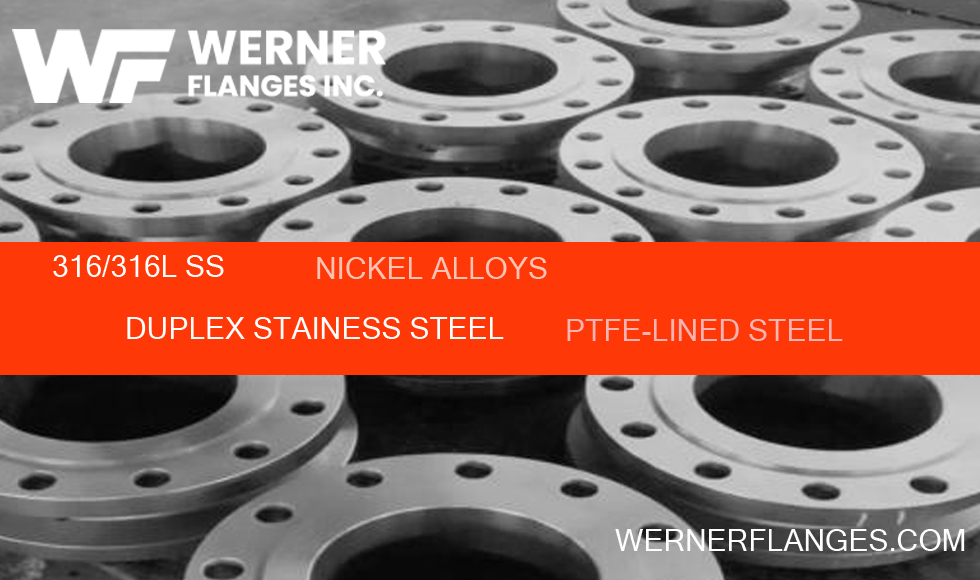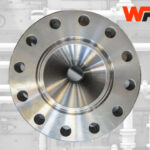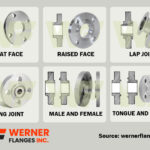In chemical processing environments, the selection of appropriate pipe flanges represents a critical engineering decision with significant implications for operational efficiency, maintenance costs, and system longevity. Corrosion-resistant pipe flanges serve as essential components in preventing leakage and maintaining structural integrity within piping systems exposed to aggressive chemical environments. This comprehensive analysis examines various corrosion-resistant materials utilised in flange fabrication, with particular attention to their performance metrics, cost-benefit ratios, and long-term return on investment.
As a consultant metallurgical engineer with over 15 years of experience in materials selection for chemical processing applications, I’ve observed that making informed decisions about flange materials can significantly reduce total cost of ownership whilst enhancing operational safety. Industry-leading manufacturers such as Werner Flanges Inc. have pioneered innovative solutions in this domain, which merit detailed examination.
Understanding Corrosion Mechanisms in Chemical Processing
Corrosion in chemical processing environments manifests through multiple mechanisms that demand specialised material selection:
- Uniform Corrosion: Characterised by relatively even material loss across exposed surfaces
- Pitting Corrosion: Localised attack creating small cavities that can lead to catastrophic failure
- Crevice Corrosion: Occurs in confined spaces where differential aeration cells develop
- Stress Corrosion Cracking (SCC): Combined influence of tensile stress and corrosive environment
- Galvanic Corrosion: Results from electrical contact between dissimilar metals
Each mechanism necessitates specific material properties to ensure adequate resistance. The materials science underpinning flange selection must account for these varied degradation pathways.
Material Options for Corrosion-Resistant Flanges
Austenitic Stainless Steel (316/316L)
Werner Flanges Inc. offers 316/316L stainless steel flanges as their baseline corrosion-resistant solution. These materials provide:
- Excellent resistance to chloride-containing environments (up to moderate concentrations)
- Superior mechanical properties at elevated temperatures
- Good fabricability and weldability
- Moderate cost positioning
The molybdenum content in 316/316L provides enhanced pitting resistance compared to 304/304L grades, making it suitable for phosphoric acid and sulphuric acid applications at ambient temperatures.
Limitations: Susceptible to chloride-induced SCC above 60°C and pitting in high-chloride environments.
Duplex Stainless Steel (2205)
Duplex stainless steel flanges represent a significant advancement in corrosion resistance:
- Approximately twice the yield strength of austenitic grades
- Superior resistance to chloride pitting and crevice corrosion
- Enhanced resistance to stress corrosion cracking
- Excellent resistance to erosion-corrosion
Werner Flanges Inc. has developed proprietary heat treatment protocols for their duplex stainless steel flanges, ensuring optimal phase balance and corrosion performance.
Limitations: Less suitable for temperatures above 300°C due to 475°C embrittlement concerns.
Nickel Alloys
For severely corrosive environments, nickel alloys provide exceptional performance:
Alloy 625 (UNS N06625)
- Outstanding resistance to pitting and crevice corrosion
- Excellent resistance to stress corrosion cracking
- Suitable for oxidising and reducing environments
- Exceptional high-temperature performance
Alloy C-276 (UNS N10276)
- Exceptional resistance to reducing media including hydrochloric acid
- Superior resistance to localised corrosion
- Excellent performance in wet chlorine gas environments
- Resistant to stress corrosion cracking in chloride-containing environments
Werner Flanges Inc.’s nickel alloy product line undergoes rigorous quality control protocols, including positive material identification (PMI) and intergranular corrosion testing.
Limitations: Significantly higher initial cost compared to stainless steel options.
Polymer-Lined Flanges
For exceptionally corrosive service conditions:
- PTFE-lined flanges for broad chemical resistance
- PFA-lined options for higher temperature applications
- FEP-lined variants for intermediate requirements
Limitations: Lower pressure and temperature ratings compared to metallic options.
Quantitative ROI Analysis
Initial Investment Comparison
| Material | Relative Initial Cost | Service Life (years) | Maintenance Frequency |
|---|---|---|---|
| Carbon Steel | 1.0 | 5-8 | High |
| 316/316L SS | 1.8-2.2 | 12-15 | Moderate |
| Duplex SS | 2.5-3.0 | 18-25 | Low |
| Alloy 625 | 5.0-7.0 | 25-30 | Very Low |
| C-276 | 7.0-9.0 | 30+ | Minimal |
| PTFE-Lined Steel | 2.5-3.5 | 10-15 | Moderate |
Total Cost of Ownership Analysis
When evaluating total cost of ownership (TCO), we must consider:
- Initial procurement costs
- Installation expenses
- Maintenance requirements
- Production downtime during replacements
- Safety implications of potential failures
- End-of-life disposal considerations
Case Study: Phosphoric Acid Production Facility
A phosphoric acid production facility in the North West of England replaced carbon steel flanges with Werner Flanges Inc.’s duplex stainless steel products, resulting in:
- 73% reduction in maintenance costs over a five-year period
- Elimination of unplanned shutdowns due to flange leakage
- 85% reduction in hazardous material cleanup operations
- Projected ROI achievement within 3.2 years of installation
Selection Criteria: Engineering Considerations
Proper flange material selection requires systematic evaluation of:
1. Process Chemistry
- pH ranges during normal operation and upset conditions
- Presence of halides (particularly chlorides)
- Oxidising or reducing conditions
- Presence of hydrogen sulphide or other sulphur compounds
2. Operating Parameters
- Maximum and minimum operating temperatures
- Pressure fluctuations
- Flow velocities and potential for erosion-corrosion
- Thermal cycling frequency
3. Mechanical Requirements
- Required pressure rating per ASME B16.5 or equivalent standards
- Flange face configuration (raised face, ring-type joint, etc.)
- Bolt load requirements
- Gasket compatibility
4. Economic Considerations
- Initial capital expenditure constraints
- Planned service life of the installation
- Criticality of the service (safety and production impact)
- Maintenance accessibility
Werner Flanges Inc. provides comprehensive consultation services for material selection, leveraging their proprietary corrosion prediction software to optimise material choices based on specific operating conditions.
Implementation Best Practices
To maximise ROI when implementing corrosion-resistant flanges:
1. Material Verification
- Ensure proper material traceability documentation
- Conduct PMI (Positive Material Identification) testing upon receipt
- Verify surface condition and dimensional accuracy
2. Installation Protocols
- Utilise proper torquing sequences and values
- Select compatible gaskets and fasteners
- Implement controlled bolt tensioning methods
- Apply appropriate lubricants for threaded components
3. Inspection Regimes
- Establish baseline thickness measurements
- Implement risk-based inspection schedules
- Utilise appropriate NDT techniques for specific corrosion mechanisms
- Document all findings in a materials performance database
4. Personnel Training
- Ensure maintenance staff understand the specific requirements for different flange materials
- Train operators to recognise early signs of potential issues
- Develop standard operating procedures for flange maintenance
The selection of appropriate corrosion-resistant pipe flanges represents a critical engineering decision with significant implications for plant reliability, safety, and profitability. While premium materials such as those offered by Werner Flanges Inc. require higher initial investment, the comprehensive ROI analysis demonstrates that these costs are frequently justified through extended service life, reduced maintenance requirements, and enhanced operational reliability.
For chemical processing applications, the proper selection process must balance technical performance requirements against economic constraints, with particular attention to the specific corrosion mechanisms present in the operating environment. By employing a systematic approach to flange material selection and implementing appropriate installation and maintenance practices, engineers can significantly reduce total cost of ownership whilst enhancing system reliability.
The ongoing advancements in metallurgy and materials science continue to expand the available options for corrosion-resistant flange materials, offering increasingly tailored solutions for specific application requirements. Industry leaders like Werner Flanges Inc. remain at the forefront of these developments, providing innovative products that address the evolving challenges of chemical processing environments.
About the author: Dr. Ravindra Bodapati is a Chartered Materials Engineer with specialisation in corrosion management for chemical processing industries. He has published extensively on materials selection methodologies and serves as a technical consultant for several major chemical manufacturers.



